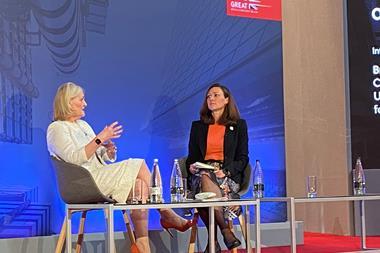’Property flood resilience can significantly reduce the stress and trauma associated with floods,’ says head of communications
Flood Re’s head of communications has warned there was a “real lack” of consumer awareness around property flood resilience measures amid flooding and extreme weather events rising.

Kelly Ostler-Coyle told Insurance Times there was an “ongoing need” to raise awareness of the benefits of property flood resilience, particularly with homeowners in flood risk areas.
It comes after Flood Re published a new training video for the insurance market to drive a “deeper understanding” of the Build Back Better scheme.
The scheme, launched in 2022, offers householders the opportunity to install property flood resilience measures up to the value of £10,000 when repairing their properties after a flood.
Ostler-Coyle said the scheme was a “ground breaking initiative, challenging the indemnity principle and giving policy holders extra to protect their homes”.
“So, it is important that everyone in the insurance eco-system – including loss adjusters and claims handlers – understands how it works, where it fits and the difference it can make,” she said.
Ostler-Coyle added: “There is presently a real lack of consumer awareness in the UK of the value and benefits of property flood resilience measures.
“The reality is that when someone is flooded, it can be a very traumatic experience and property flood resilience can significantly reduce the stress and trauma associated with flood, the time they may need to be out of their property and the cost of any repairs.”
Engagement
Ostler-Coyle said that the Environment Agency (EA) had stressed the number of properties in the flood plain were likely to increase as the population grew.
Read: Flood Re reports £46m in GWP for 12 months to March 2022
Read: Briefing – Charity report warnings put insurance at heart of flood risk solution
Explore more sustainability content here or discover more news content here
However, as part of raising awareness for property flood resilience measures, Flood Re will work together with the EA with a view to launching a consumer initiative later in 2023.
“This is why Flood Re’s engagement in the planning sector has sought to improve considerations for both current and future flood risk,” she added.
“As housing demand rises, we have also advocated to move beyond the binary conversation of whether or not to build in the flood plain, instead, taking a risk-based approach instead and building resiliently to safeguard householders’ insurance availability and affordability along with mortgage availability.”
Hosted by comedian and actor Tom Allen, 34 Gold, 23 Silver and 22 Bronze awards were handed out across an amazing 34 categories recognising brilliance and innovation right across the breadth of UK general insurance.



















































No comments yet